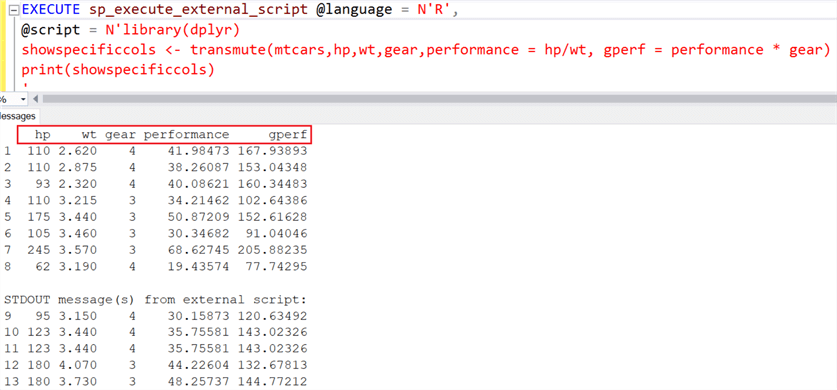
And the true power of dplyr is revealed when we perform these operations by groups. But of course we can also create new data. It allows for the use of many dplyr verbs, such as summarize, groupby, and mutate. At this point we have only used dplyr to subset and organize our data. srvyr focuses on calculating summary statistics from survey data.
#Summarize dplyr how to
In this article you’ll learn how to handle the dplyr message summarise () has grouped output by ‘gr1’. Count number of observations using n () Group data by variable (s) with groupby. dplyr is a package for making tabular data wrangling easier by using a limited set of functions that can be combined to extract and summarize insights from your data. There is nothing wrong with asking beginner questions! We were all beginners once, and we are all still beginners at countless things. R dplyr Message: summarise () has grouped output by ‘X’. (if you do need to do further analysis on multiple values of Category, summarizing them as a list column with cat = list(Category) is probably the way to go, although then you'll really want to look into purrr and this great tutorial) Concatenation is one simple option, though whether it's a good idea or not depends on what you're doing next with the summarized data (displaying in a table? further analysis? ). The more the number of variables or functions increases, the more summariseeach () becomes a better choice. As a consequence, summarise () seems more appropriate dealing with a single variable or a single function. rendered by printing it at the Simple frequency table using dplyr Raw freq-table. dplyr has a set of core functions for data munging,including select (),mutate (), filter (), groupby () & summarise (), and arrange (). If it's possible you might have more than one value of Category per group, then it's up to you to decide how they should be collapsed into a single value. Function summarise () has a simpler syntax while function summariseeach () has a more compact notation. In Excel, pivot tables offer an easy way to group and summarize data. dplyr groupby () and summarize (): Group By One or More Variables Augby cmdline dplyr, is a R package provides that provides a great set of tools to manipulate datasets in the tabular form.

Before we can extract a subset based on the dplyr environment. So if you're certain that there's only one value of Category per group, you could use: small %>% To summarize: This article explained how to return rows according to a matching criterion. These are the steps: Define a new column I am trying to aggregate a large data set by two identification.

Summarise() just needs a function that will return a single value. R: dplyr conditional summarize and recode values.


 0 kommentar(er)
0 kommentar(er)
